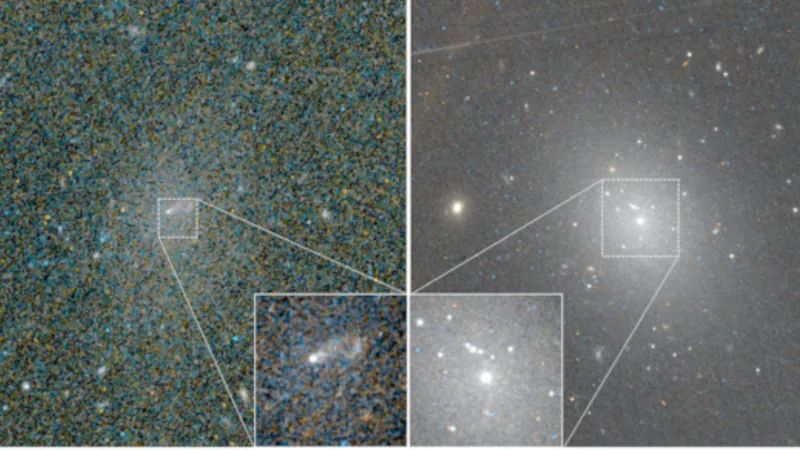
Hubble Telescope Captures Stunning Images of Cosmic Clash: Star Clusters Shatter Expectations!
2025-04-10
Author: Siti
A Revolutionary Discovery by Hubble
The Hubble Space Telescope has achieved a groundbreaking feat: it has directly captured the dramatic collision and merging of star clusters at the cores of dwarf galaxies. This momentous find could finally unravel a long-standing mystery surrounding the formation of these distant galactic centers.
Unraveling the Mysteries of Dwarf Galaxies
Dwarf galaxies are the most numerous type in the universe, and their central nuclei are packed with hundreds of thousands to millions of stars. Understanding how these dense stellar conglomerates form is crucial for astronomers, and this new research suggests that they originate from smaller clusters, known as globular clusters, merging as they wander towards the galactic centers.
An International Effort
The groundbreaking discovery was made by the international team at MATLAS, who examined approximately 80 dwarf galaxies using Hubble's powerful observational tools. Among their findings, they identified a handful of galaxies with star clusters displaying unexpected features at their cores.
A Shocking Revelation
"We were astonished to see streams of light emerging from the centers of these galaxies, something never observed before," exclaimed Mélina Poulain, a researcher at the University of Oulu. This curiosity led to further investigation into these peculiar clusters.
The Cannibalistic Nature of Stars
The features observed bore striking similarities to known globular clusters, indicating that the Hubble Telescope was witnessing a cosmic cannibalistic event: larger star clusters consuming smaller ones in the fierce gravitational dance happening at the heart of dwarf galaxies.
Visualizing Cosmic Collisions
Team member Rory Smith from Universidad Técnica Federico Santa María developed simulations to model this merging process. These simulations revealed that the streams of light Hubble captured were the result of two star clusters colliding, with significantly different masses. This breathtaking merger event occurs relatively quickly, lasting less than 100 million years, with its defining characteristics fading even faster. This rapid evolution explains why such cosmic encounters have remained elusive until now.
Implications for Cosmic Understanding
This remarkable observation expands our knowledge of star formation and galactic evolution, providing crucial insights into the life cycles of dwarf galaxies. With Hubble’s help, astronomers are now closer than ever to understanding the intricate tapestry of our universe.

 Brasil (PT)
Brasil (PT)
 Canada (EN)
Canada (EN)
 Chile (ES)
Chile (ES)
 Česko (CS)
Česko (CS)
 대한민국 (KO)
대한민국 (KO)
 España (ES)
España (ES)
 France (FR)
France (FR)
 Hong Kong (EN)
Hong Kong (EN)
 Italia (IT)
Italia (IT)
 日本 (JA)
日本 (JA)
 Magyarország (HU)
Magyarország (HU)
 Norge (NO)
Norge (NO)
 Polska (PL)
Polska (PL)
 Schweiz (DE)
Schweiz (DE)
 Singapore (EN)
Singapore (EN)
 Sverige (SV)
Sverige (SV)
 Suomi (FI)
Suomi (FI)
 Türkiye (TR)
Türkiye (TR)
 الإمارات العربية المتحدة (AR)
الإمارات العربية المتحدة (AR)